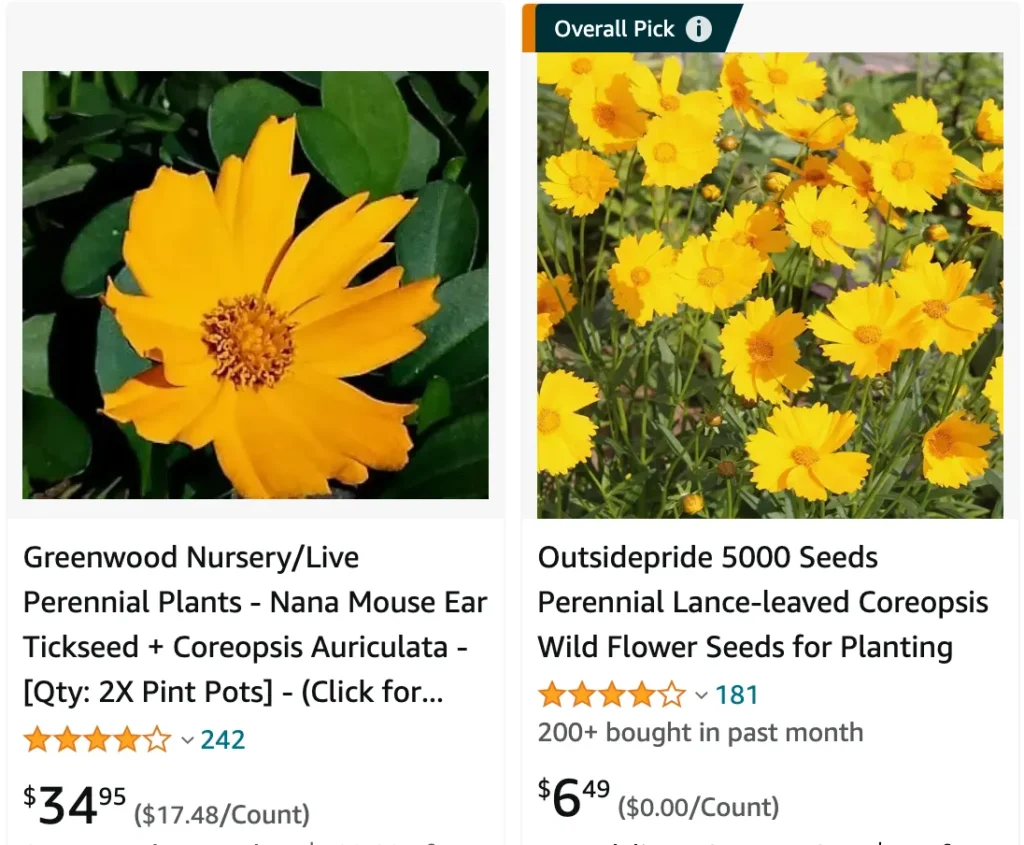
What is Coreopsis Auriculata?
Hi there, Ferb Vu here! I’m a gardening enthusiast with a particular fondness for low-maintenance, cheerful blooms. Today, we’re diving into the world of Coreopsis Auriculata, also known as the Lobed Tickseed.
This little powerhouse packs a punch of sunshine-colored flowers and easygoing charm. Whether you’re a seasoned gardener or a newbie just starting out, Coreopsis Auriculata might be the perfect addition to your landscape.
39 Species in Genus Coreopsis
Sun Seeker or Shade Tolerant?
Coreopsis Auriculata thrives in full sun. Think bright, open areas where it can soak up the sun’s rays. While it can tolerate some partial shade, expect fewer blooms and a less vigorous plant.
So, how does it compare to other sun-loving flowers?
Coreopsis shines (pun intended) next to other full-sun perennials like Black-Eyed Susan (Rudbeckia) or Butterfly Weed (Asclepias). But unlike some perennials that wilt in the heat, Coreopsis Auriculata handles summer’s scorch with aplomb.
Water Worries?
This little trooper is surprisingly drought tolerant. Once established, it can handle periods of dryness without complaint. Regular watering is beneficial, especially during extended dry spells or for young plants. Aim for moist but well-drained soil.
How does it stack up against other drought-tolerant plants?
Coreopsis Auriculata holds its own against champion drought-lovers like Lavender or Yarrow. However, for truly water-stingy landscapes, consider succulents or cacti.
Planting and Propagation
Coreopsis Auriculata is a versatile plant when it comes to propagation. You can sow seeds directly in the garden in late fall or early spring. Alternatively, divide existing clumps in the fall to create new plants.
Looking for a low-maintenance option?
Seeding is the way to go. But if you want instant gratification, dividing established plants is a quicker route.
Care and Maintenance
Here’s the beauty of Coreopsis Auriculata: it requires minimal maintenance. Deadheading spent flowers will encourage continued blooming throughout the season. A light application of fertilizer in spring isn’t necessary but can boost flower production.
Does it attract pollinators?
Absolutely! The cheerful yellow blooms are a magnet for butterflies, bees, and other beneficial insects.
Soil Type and Fertility
Coreopsis Auriculata isn’t picky about soil. It thrives in average to poor soil, as long as it’s well-drained. Sandy or loamy soils are ideal.
How does it compare to other adaptable plants?
Coreopsis shares its easygoing nature with perennials like Coneflower (Echinacea) or Columbine (Aquilegia). These plants add beauty to your garden without demanding fancy soil amendments.
Potential Problems and Solutions
Coreopsis Auriculata is a generally pest and disease-resistant plant. However, excessive moisture can lead to fungal issues like powdery mildew. Ensure good air circulation around the plants and avoid overwatering.
Specific Varieties of Coreopsis Auriculata
Coreopsis Auriculata comes in a few delightful varieties, each with its own unique charm:
- Coreopsis Auriculata ‘Nana’: This compact variety grows to about 12-18 inches tall and is perfect for edging borders or containers.
- Coreopsis Auriculata ‘Moonbeam’: This variety boasts soft yellow, almost white flowers and a slightly taller stature, reaching up to 24 inches.
- Coreopsis Auriculata ‘Goldilocks’: As the name suggests, this variety strikes a balance between height (18-24 inches) and flower color, offering a sunny golden hue.
Companion Planting Ideas
Coreopsis Auriculata plays well with others! Here are some ideas for creating a stunning and harmonious garden:
- Purple partners: Pair your Coreopsis with Lavender or Salvia for a vibrant contrast of yellow and purple.
- Bluetiful blooms: Create a calming effect by planting Coreopsis alongside blue Veronica or Catmint.
- Silvery sensations: Dusty Miller’s silvery foliage provides a beautiful textural contrast to the bright yellow flowers.
Winter Care
Coreopsis Auriculata is a hardy perennial that tolerates cold winters well. In colder climates (USDA zones 4-6), you can mulch around the base of the plant with a light layer of leaves or straw to provide additional winter protection.
Conclusion: Why Choose Coreopsis Auriculata?
Coreopsis Auriculata offers a winning combination of low maintenance, long bloom time, and cheerful color. It’s a fantastic choice for beginner gardeners or those seeking a hassle-free addition to their sunny borders.
So, if you’re looking for a plant that brings sunshine to your garden and welcomes pollinators, Coreopsis Auriculata might just be your perfect match. Happy planting!
If i die, water my plants!



